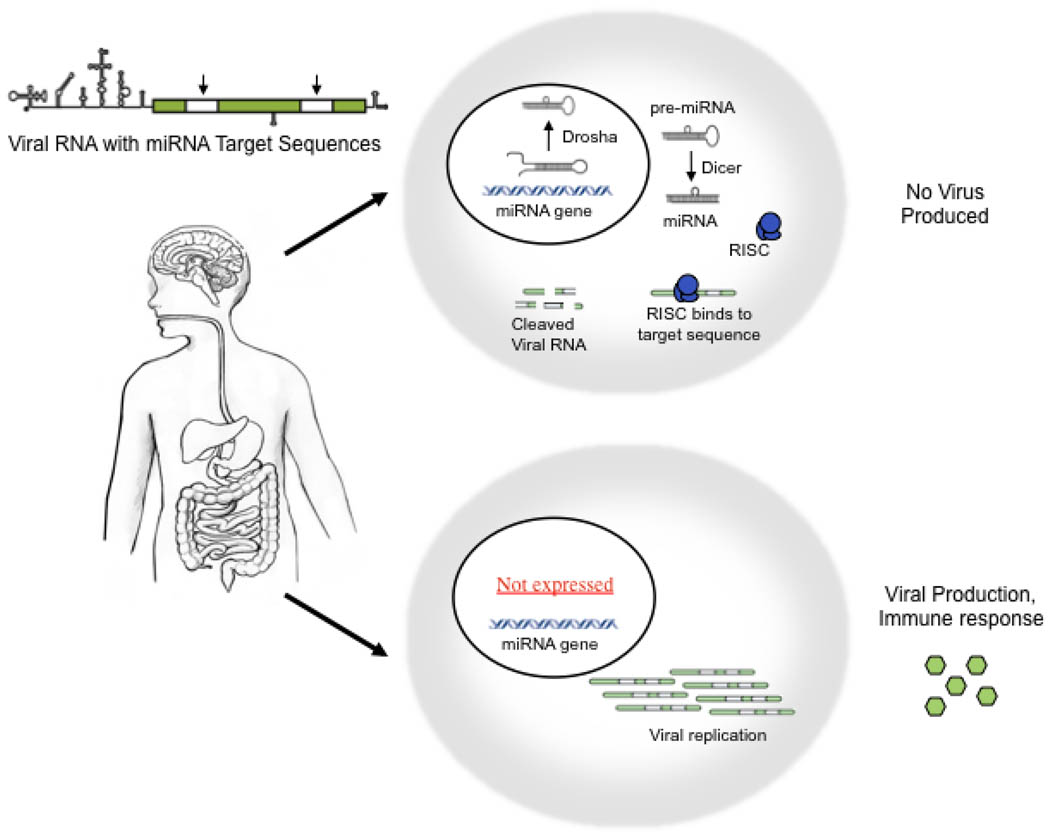Figure 1. miRNA-virus vaccine strategy.
Genes coding for one or more microRNA are transcribed as long precursor pri-miRNA, which are processed by the nuclear ribonuclease Drosha to ~ 60 nucleotide hairpin intermediates. These small RNA are transported to the cytoplasm where they are trimmed by Dicer to roughly ~ 22 nucleotides. Mature miRNA are loaded into the RNA-induced silencing complex (RISC), where they mediate either degradation or translational repression of target messages. Viral replication can be regulated in a tissue specific manner by incorporating miRNA target sites into the viral genome. Viral RNA are cleaved in cells expressing the corresponding miRNA (e.g. brain, top cell), and viral production is restricted to cells in which the miRNA is not expressed (e.g. intestine, bottom cell). The engineered virus can therefore trigger a natural immune response in target tissues without the associated risk of dissemination and disease.

